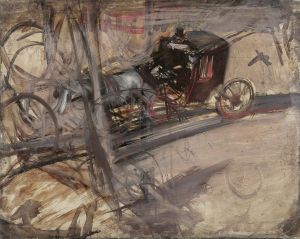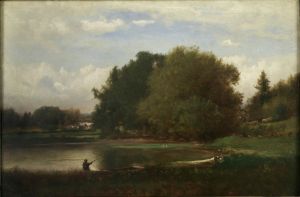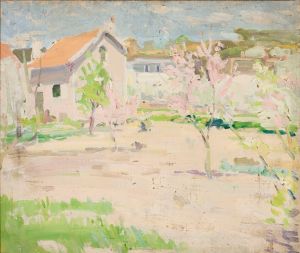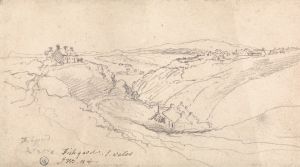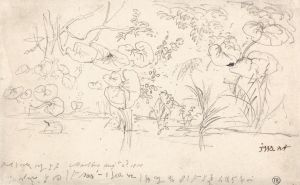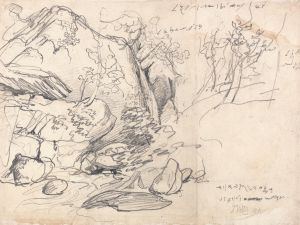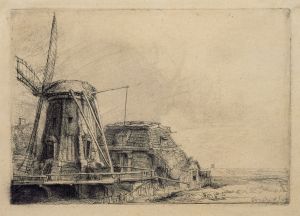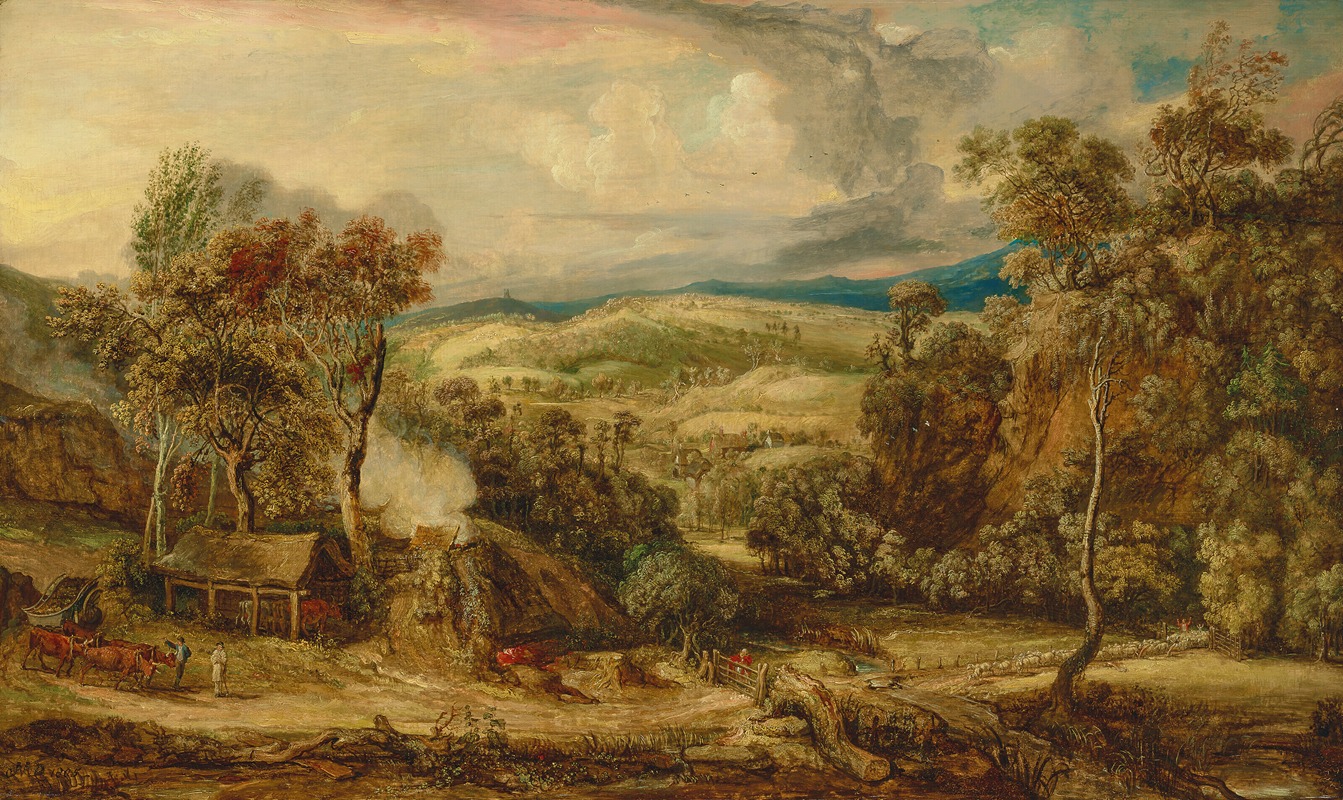
Fitzhead in Somerset, with an ox-cart near a lime kiln, and Glastonbury Tor in the distance
A hand-painted replica of James Ward’s masterpiece Fitzhead in Somerset, with an ox-cart near a lime kiln, and Glastonbury Tor in the distance, meticulously crafted by professional artists to capture the true essence of the original. Each piece is created with museum-quality canvas and rare mineral pigments, carefully painted by experienced artists with delicate brushstrokes and rich, layered colors to perfectly recreate the texture of the original artwork. Unlike machine-printed reproductions, this hand-painted version brings the painting to life, infused with the artist’s emotions and skill in every stroke. Whether for personal collection or home decoration, it instantly elevates the artistic atmosphere of any space.
"Fitzhead in Somerset, with an ox-cart near a lime kiln, and Glastonbury Tor in the distance" is a painting by the renowned British artist James Ward. James Ward (1769–1859) was an influential painter and engraver, known for his landscapes, animal paintings, and portraits. He was a key figure in the Romantic movement in Britain, and his works often reflect a deep appreciation for the natural world and rural life.
This particular painting captures a rural scene in Somerset, a county in South West England known for its picturesque landscapes and historical landmarks. The painting's composition includes an ox-cart, a lime kiln, and the distant silhouette of Glastonbury Tor, a hill topped by the tower of St. Michael's Church, which is a notable landmark in the region.
The inclusion of the ox-cart and lime kiln suggests a focus on the agricultural and industrial activities that were prevalent in Somerset during the 19th century. Lime kilns were commonly used in rural areas for producing lime, which was an essential material for agriculture and construction. The presence of the ox-cart indicates the transportation methods of the time, highlighting the reliance on animal labor in the rural economy.
Glastonbury Tor, visible in the distance, adds a layer of historical and cultural significance to the painting. The Tor is steeped in legend and myth, often associated with King Arthur and the Isle of Avalon. Its iconic presence in the painting not only situates the scene geographically but also imbues it with a sense of mystery and historical depth.
James Ward's technique in this painting is characteristic of his style, which often combines meticulous detail with a romanticized view of the landscape. His use of light and shadow, as well as his attention to the textures of the natural environment, creates a vivid and dynamic scene that captures the viewer's attention.
The painting reflects Ward's ability to convey the beauty and complexity of rural life, as well as his skill in integrating elements of the landscape with human activity. It serves as a valuable historical document, offering insights into the rural economy and landscape of Somerset during the early 19th century.
Ward's work, including this painting, is part of the broader Romantic movement, which emphasized emotion, nature, and the sublime. His paintings are celebrated for their ability to evoke a sense of wonder and appreciation for the natural world, making them enduring pieces of art that continue to be studied and admired.
Overall, "Fitzhead in Somerset, with an ox-cart near a lime kiln, and Glastonbury Tor in the distance" is a testament to James Ward's artistic talent and his contribution to the Romantic movement in British art.





